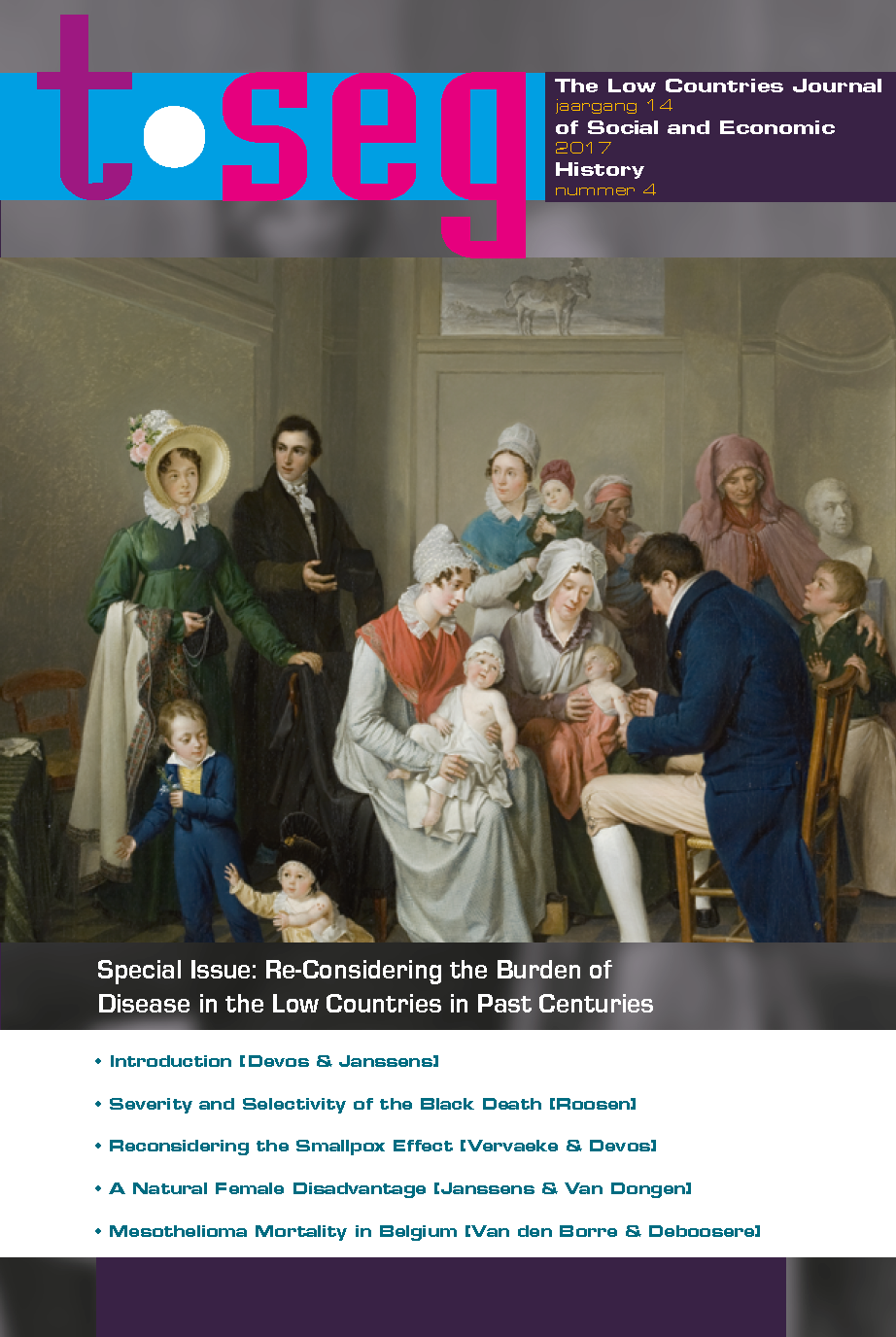A Natural Female Disadvantage? Maternal Mortality and the Role of Nutrition Related Causes of Death in the Netherlands, 1875-1899
DOI:
https://doi.org/10.18352/tseg.988Keywords:
Maternal Mortality, Causes of Death, Nineteenth Century, the NetherlandsAbstract
This article addresses the question whether maternal mortality should be excluded from the study of excess female mortality. This phenomenon points to lower survival chances for women in certain age groups as opposed to men in the same age group. The existence of excess female mortality has been established for a number of European countries, primarily for the nineteenth century period, and it has also been observed for the Netherlands between approximately 1850 and 1930. There are strong indications that in this period Dutch women were at a disadvantage compared to men, most notably between the ages of 10 to 19, but also in the adult years after age 20. The survival disadvantage for women between age 20 and 50 may be related to the dangers of pregnancy and childbirth. These maternal mortality risks may seem a natural female disadvantage. However, deficiencies in nutrition may seriously enhance the dangers of pregnancy and childbirth. Hence, if women are less privileged in access to food, causing increased levels of maternal mortality, the risk to die during pregnancy and during or after childbirth should be considered as part of the phenomenon of excess female mortality. The results of our analysis indicate that maternal mortality in this period in the Netherlands is partly the effect of the female nutritional disease environment. In particular, the incidence of nutrition-related deaths among women in fertile ages, such as tuberculosis, increase maternal mortality. We therefore assume that gender disadvantages in the access to foodstuffs of sufficient nutritional quality increased the level of maternal mortality. Consequently, in research on excess female mortality maternal mortality cannot be simply discounted as a natural disadvantage which should be left out of measures of excess female mortality.






